Our thermal spray technicians make a difference. They are highly skilled with extensive experience in thermal spray coating that meets ASTM standards including ASTM 633-01(2008) and ASTM G98. Our technicians can meet customer’s specifications, combining mastery of thermal spray equipment, material, process, dimensional verifications, and quality checks. There is no shortcut to quality, so our technicians are meticulous in every aspect of the thermal spray process, including masking of the areas to be thermal sprayed, surface preparation, grit blasting, and parameter controls.
What You Need to Know About Thermal Spraying
What is Thermal Spraying? Thermal Spraying is an industrial process which involves the projection or spraying of a coating particle onto a cleaned and prepared surface, using a combined kinetic and thermal energy to provide resistance to wear, erosion, cavitation, corrosion, or abrasion. Thermal spray coating is a mechanical bonding process which uses a variety of spray materials such as steel, nickel alloys, copper, bronzes, ceramics, tungsten carbides, etc. It can be applied at various thicknesses, typically 100-750 microns. Thermal spraying is a tried and tested technique used in various industries to repair and restore worn or damaged components.
Our Thermal Spraying Capabilities
Western Machine Works specializes in various types of thermal spraying processes for industrial applications:
Combustion Flame Spray
Combustion flame spraying is a thermal spray process used to coat substrates that are stress sensitive. In combustion flame spraying, a gaseous fuel source and oxygen are combined to melt the coating compound feed stock. Usually, the coating material takes the form of a fine powder, wire, or rod that is melted at about 4600-4800 °F. The molten particles are propelled to the substrate surface using compressed air at about 80 feet per second.
Combustion flame spraying offers several benefits:
Advantages
- Resistant to corrosion, wear, heat and oxidation
- Substate does not warp or distort
- Electrical resistivity and conductivity
Two-Wire Electric Arc thermal Spraying
Western Machine Works utilizes the twin-wire arc metal spray process for component restoration. The material deposited is 420 Stainless Steel. This system feeds two wires to the gun. The wires are charged with opposite polarities. When the wires are brought together at the contact point, the opposing charges on the wires create enough heat to continuously melt the tips of the wires. Compressed air is used to atomize the now molten material and accelerate it to the workpiece surface where it is embedded to form the coating.
Components are prepared by previously machining to the proper pre-buildup size, then carefully masked and prepared with appropriate grit blasting.
Advantages
- Speed – Restorations using this method can be done in a fraction of the time it takes to brush plate the same fit.
- Environmental – No hazardous waste products are generated using this process.
- Flexibility – This process can be used to restore a part requiring as much as .050” per side on a 4” diameter journal. Brush plating is limited to about .010” per side without adding copper as a base material.
- Proven Serviceability – Thousands of bearing fits have been restored using this process.
- Proven Reliability – Western Machine has never had a restored bearing fit fail when using this process.
Conclusion: A 420 stainless steel thermal spray coating produced using a twin wire arc process improves the galling and fretting resistance of the material. In terms of thickness, oxide content, and porosity level, the coating has a notable amount of variation between samples. However, in all cases coating integrity is good.
TABLE 1 — Summary of results for the bond strength test of the 420 stainless steel coating
| Sample | Tensile Strength, PSI | Load, lbs | Cross-Sectional Area, sq in | Mode of Failure |
| 1 | 5430 | 4252 | 0.7830 | 90% adhesive |
| 2 | 5085 | 3978 | 0.7823 | 90% adhesive |
| 3 | 4790 | 3755 | 0.7838 | 90% adhesive |
| Average | 5102 | – | – | – |
TABLE 2 — Results for a blank specimen (no coating)
| Sample | Tensile Strength, PSI | Load, lbs |
| Bond bar | 12,493 | 9773 |
TABLE 3 — Summary of test data for this evaluation
| ID | Counterface Material (hardness) | Rider scan diameter, mm | 52100 rider wear scar volume, cu. mm | Counterface wear scar volume, cu. mm |
| 1 | 4340 (42-44 HRC) | 1.016 | 0.01661 | 0.00115 |
| 2 | 4340 (42-44 HRC) | 0.889 | 0.00971 | 0.00041 |
| 3 | 420 SS coated 4340 (42-44 HRC) | 0.762 | 0.00524 | 0.00014 |
| 4 | 420 SS coated 4340 (42-44 HRC) | 0.762 | 0.00524 | 0.00016 |
Custom Coatings
Stainless Steel Coatings
Thermal sprayed stainless steel coatings are a practical, efficient way to protect essential components. Stainless steel is abrasive and corrosion resistant, and cost-effective when compared to other compounds. Applications that stainless steel is good for include shafts, cylinder linkers, crankshaft bearings, and most moving parts.
Advantages
- High strength coating
- Low shrinkage
- High elongation
- Crack resistant on shafts
Technical Specifications
Material Composition: 13% Cr, .5% Si,.5% Ni, .5% Mn,.35% C, Balance Fe.
Manufacturer product description: High chrome stainless steel, excellent wearing qualities, fair corrosion resistance, best all-purpose material for machine element work.
Hardness: Rc 40-43
Bond Strength: 4000 – 10,000 PSI
Density: 85 – 95 % Wrought material
Thickness Limitation: .100”
Tungsten Carbide Coatings
Tungsten carbide is a chemical compound of equal amounts of tungsten and carbon atoms. When it is in powder form, it is a gray color. One of the characteristics of tungsten carbide is it has a very high Mohs hardness level.
Advantages
- Less than 1% Porosity
- High resistance to wear
- Hardness Exceeding Rc70
- Corrosion-resistant
- Bonding Strength Average of 8,500psi
- Can be finished down to 6 Ra
Traction Coatings
Traction coatings are used on rolls in the printing and papermaking industry to grab and feed paper. Because the traction of the coating depends substantially on the degree of its surface roughness, nearly any material can be used to create a traction coating. However, in most applications where a traction coating is required there is also a great amount of wear present and, therefore, the most common traction coating materials are carbides, stainless steels, and nickel alloys.
Western Machine Works are experienced in the application of traction coatings to various types of rolls and rotating components. Traction coatings are used to increase coating integrity and customize surface textures, increase roll runnability, reduce downtime, and extend the service life of the equipment.
Where Can Thermal Spray Be Used?
Thermal spray coatings are used in various industries:
- Marine
- Pulp & Paper
- Wind Power
- Hydropower
- Steel
- Printing
- Food Processing
- Thermal
Thermal spray has the following uses and applications:
- Bearing Fit Repairs
- Seal Fit Repairs
- Wear Resistance
- Corrosion Resistance
- Galling and Fretting Resistance
Thermal Spray Coating Projects
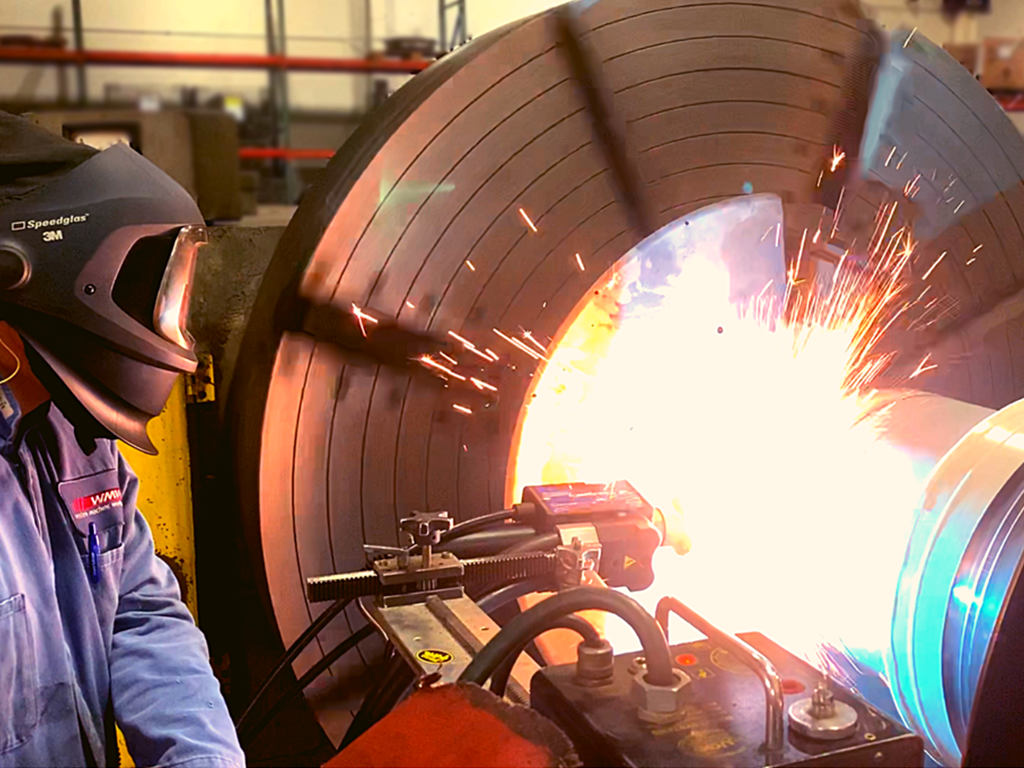
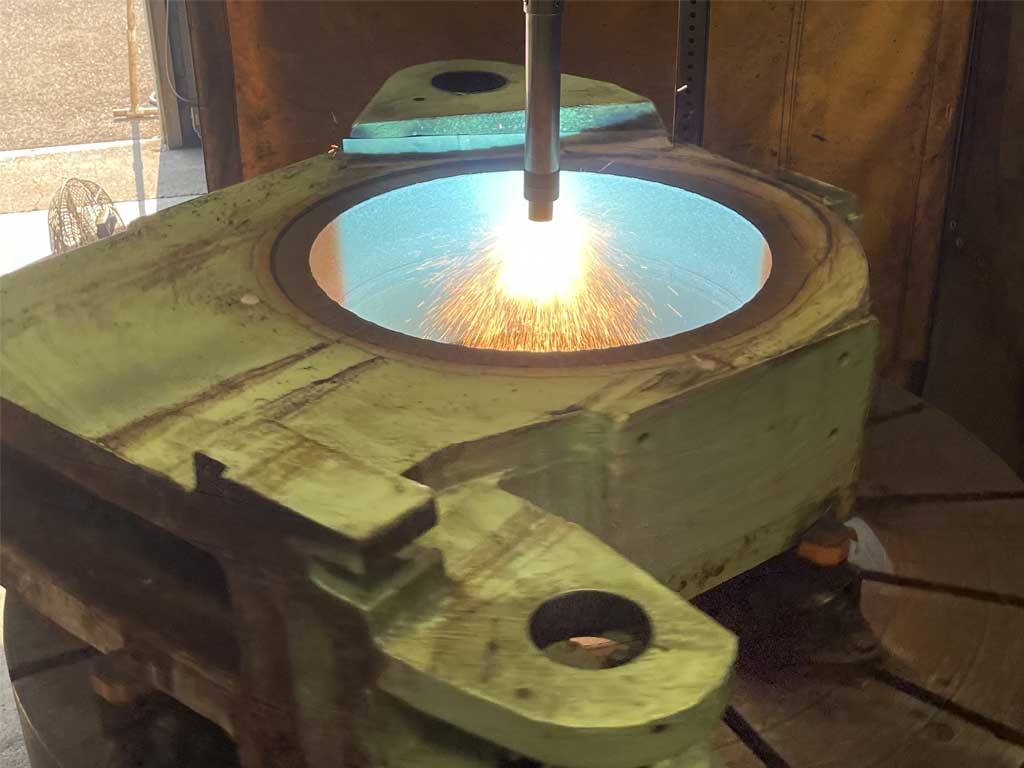
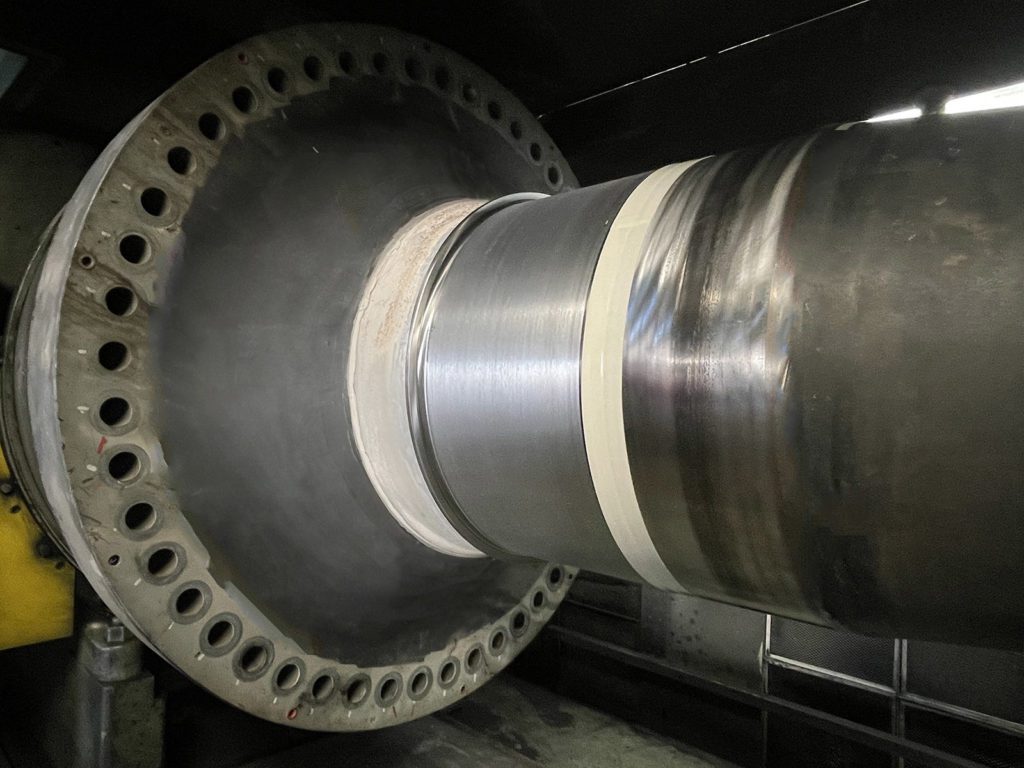
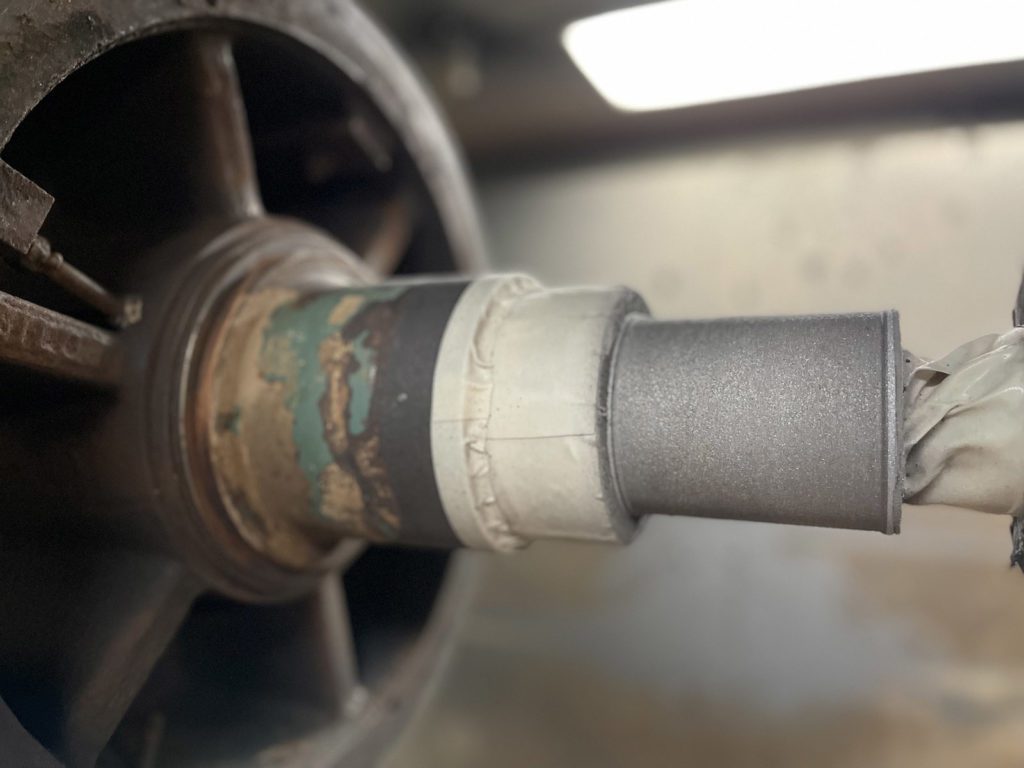
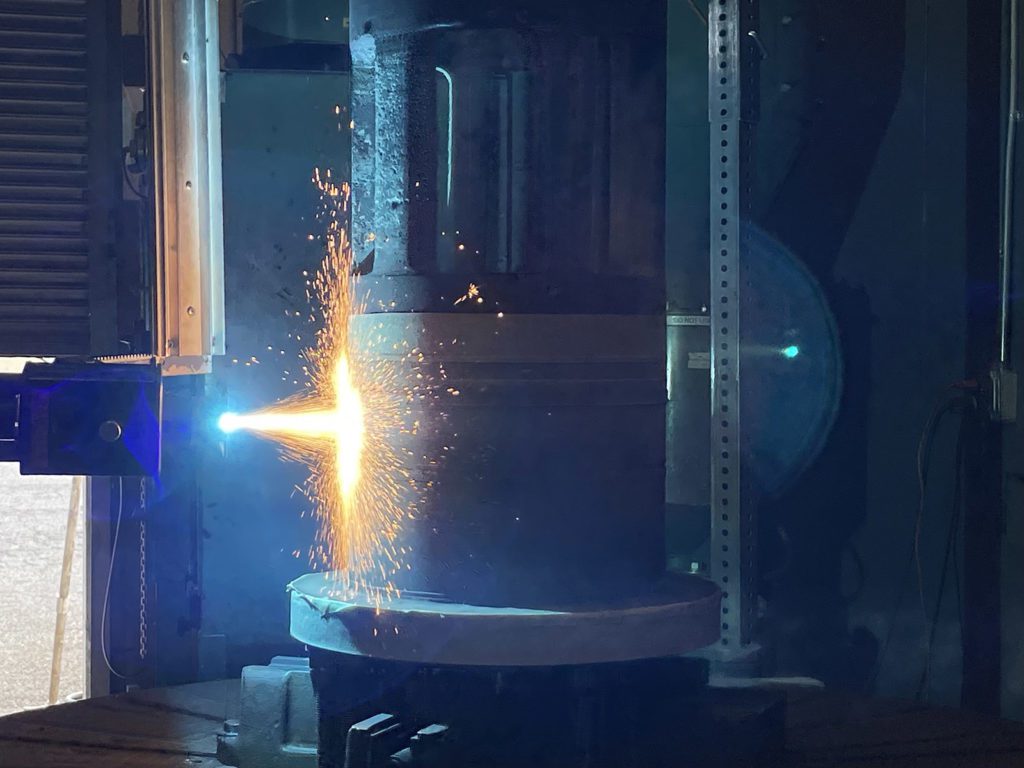
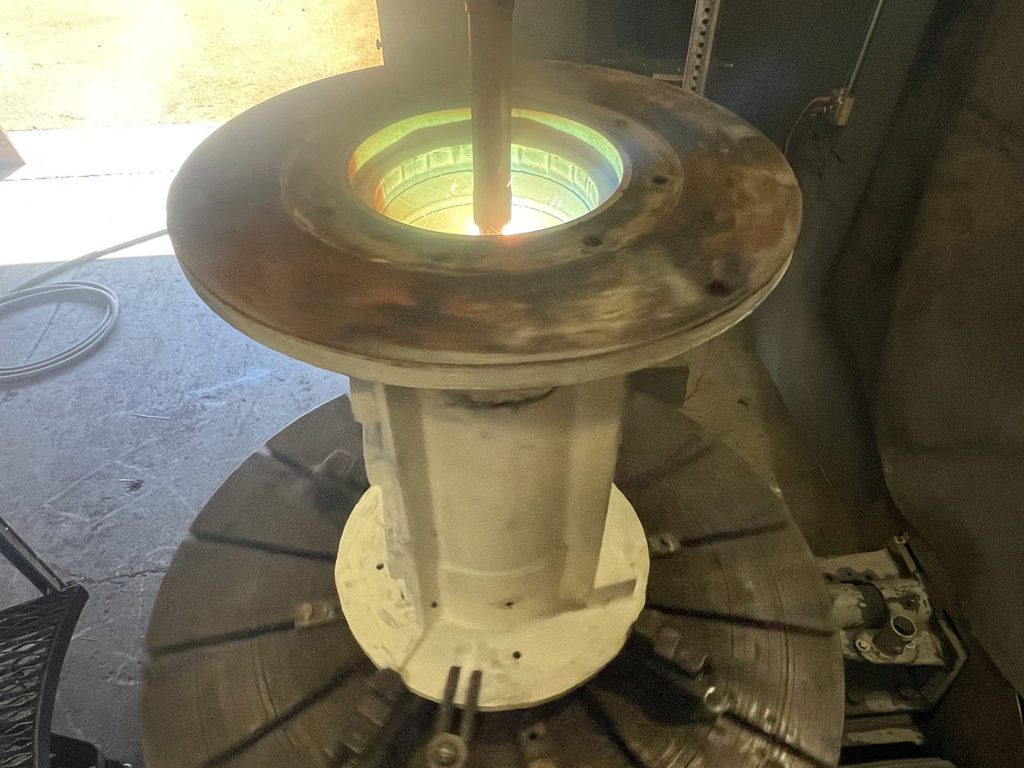
Our Engineers Have Vast Experience With the Thermal Spray Process
The thermal spray process utilizes a 420 Stainless Steel coating material that performs well under compression and resists corrosion and erosion. The resulting bond strength, hardness, and coating integrity are suitable for applications in the wind & hydropower, marine, aerospace, and other critical heavy equipment industries. View technical sheet.
Let’s talk about your project.